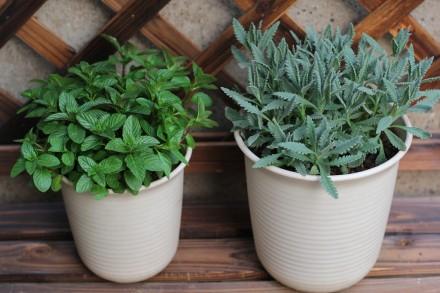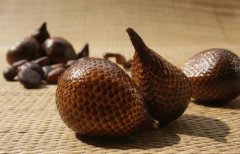What are the diseases of vanilla plants? Introduction and control methods of blight / blight / white silk disease
After being introduced from abroad by horticultural growers, vanilla plants can also be made into flower drinks or vanilla bath products in addition to serving as spices. Various types of applications have been integrated into the daily life of the general public and are becoming more and more popular. In addition to a large number of gardening and residential cultivation, general potted sketches are also very popular with consumers. Vanilla crops can be seen everywhere in windowsills and office places, but because most vanilla crops have only been introduced from abroad in recent years, the types of diseases and their occurrence and harm are not very clear. this paper only gives a brief introduction to the types, symptoms and control methods of common diseases in the field.
1. Blight disease (Stem blight)
Pathogen: Rhizoctonia solani Kuhn
Symptoms and occurrence ecology:
The fungal disease transmitted by soil shows a slight depression or constriction at the base of the stem at the beginning of the disease, and then produces brown spots, resulting in aboveground withering, lodging and death. if the leaves come into contact with the affected part, there will also be browning and death symptoms. In the later stage, brown irregular small sclerotia can appear in the affected area, which can float with irrigation water to cause secondary infection, or remain in the soil, becoming the primary source of infection in the next season.
Prevention and control methods:
1. It is found that the diseased plants should be removed immediately together with the root medium to avoid sclerotia and increase the source of infection in the field.
two。 Application of antagonistic microorganism Trichoderma sp developed by Agricultural Laboratory or Pingtung University of Science and Technology. For biological control.
II. Epidemic disease (Phytophthora blight)
Pathogen: Phytophthora parasitica Dastur
Symptoms and occurrence ecology:
Soil-borne fungal diseases initially produce water-immersed spots at the base of the stem, and white filaments can be seen growing on them at high humidity. with the progress of the disease, withering symptoms will appear in the aboveground parts of the plant, resulting in plant death in severe cases. Rainy season or poor drainage can easily lead to the spread of diseases.
Prevention and control methods:
1. The diseased strains were immediately removed to reduce the density of pathogens.
two。 Pay attention to drainage in the park to avoid being too wet.
3. Avoid sprinkler irrigation to prevent the occurrence and spread of diseases.
4. The plant resistance could be induced by applying phosphite 1000 times every 7 days before the onset of plum rain season.
3. White silk disease (Southern blight)
Athelia rolfsii (Curzi) Tu et Kimbr. (sexual generation)
Sclerotium rolfsii Sacc. (asexual generation)
Symptoms and occurrence ecology:
In the early stage of infection, the leaves of the plants showed symptoms of yellowing and withering, and white silk filamentous hyphae could be seen at the base of the stem sticking to the affected surface, which would cause stem tissue decay and disintegration with the progress of the disease, resulting in shoot death. The mycelium produced 0.5~1mm round sclerotia in the later stage, which changed to light brown after the initial white, which could cause secondary infection by floating with irrigation water, or remained in the soil, which became the primary source of infection in the next season.
Control method: Tongli blight

- Prev
Taiwan Bowl Bowl: champion Bowl is on the market, and the Agriculture and Food Department hopes to have an average annual rice output of more than 50 kg.
In order to promote rice culture, the Agriculture and Food Department, in cooperation with super-merchants, launched the "Toyama Champion Bowl", which was technically guided by the winner of the bowl competition last year. Each bowl uses 29 grams of Indica Rice Taichung 17, which has been available in more than 3,000 households in Taiwan since the 29th.
- Next

What's the use of snake skin fruit? The efficacy and benefits of snake skin fruit can lose weight / keep beauty / clear eyes.
Have you ever heard of snake skin fruit to lose weight? Although the appearance of snake skin fruit is appalling, the skin is reddish brown and uneven, covered with layers of hilly leaves, and gives off an unpleasant smell, many people stay away as soon as they see it, but it turns out it is a gift to lose weight. There are a lot of fruits and vegetables
Related
- The first cup of black tea in spring, the flavor and history of tea gardens in Kenya, Africa
- The computer can not only choose potatoes, but also grow tea rice. AI will grow winter oolong tea champion.
- It is not only the inflated tea bitten by insects, but also engraved with the four seasons tea in Beipu.
- The Oriental Beauty Tea Festival in Zhuxian County takes the stage at the weekend to experience the plus-size feast of oil tea.
- & quot; Oriental Beauty Tea & Exploration of Emei in Hsinchu, the hometown of quot;
- The new variety of strawberry "Tainong 1" dessert is the first choice with mellow aroma. Crimson gorgeous
- History of Tea in Taiwan: from Wild Inner Mountain to Export Tea Garden
- Two types of Taiwan Oriental Beauty Black Tea won the British three-Star Award for Childhood Tea Xiang Zhang Jiaqi changed from pilot to champion tea maker.
- Banana species and varieties: the planting history of Taiwan Xianren banana and dwarf banana is long, is banana disease resistant?
- Coffee planting Technology: Qianjie Coffee from Seedling to harvesting

